PUBCHEM (U.S. National Library of Medicine) physical, chemical, and physiological characteristics of drugs & their toxicity, consumer information and references from scientific journals. Includes biological activities of small molecules.
ChemSpider is a free chemical structure database providing fast access to over 29 million structures, properties and associated information. It is created by the Royal Society of Chemistry in the United Kingdom. Integrates and links compounds from more than 440 data sources.
ChEBI (Chemical Entities of Biological Interest) is a freely available dictionary of molecular entities focused on ‘small’ chemical compounds. The term ‘molecular entity’ refers to any constitutionally or isotopically distinct atom, molecule, ion, ion pair, radical, radical ion, complex, conformer, etc., identifiable as a separately distinguishable entity. The molecular entities in question are either products of nature or synthetic products used to intervene in the processes of living organisms. From the European Bioinformatics Institute.
ChEMBL is a publicly available database of drugs, drug-like small molecules and their targets. The database is unique because of its focus on all aspects of drug discovery and its size, containing information on more than 1 million compounds and over 5 million records of their effects on biological systems. From the European Bioinformatics Institute.
IPCS INCHEM. Internationally reviewed chemical safety information from intergovernmental organizations. Rapid access to internationally peer reviewed information on chemicals commonly used throughout the world, which may also occur as contaminants in the environment and food. It consolidates information from a number of intergovernmental organizations whose goal it is to assist in the sound management of chemicals. Includes safey sheets, poison documents, etc.
DrugBank database is a unique bioinformatics and cheminformatics resource that combines detailed drug (i.e. chemical, pharmacological and pharmaceutical) data with comprehensive drug target (i.e. sequence, structure, and pathway) information. From Canada.
WHO: International Programme on Chemical Safety. Through the International Programme on Chemical Safety (IPCS), WHO works to establish the scientific basis for the sound management of chemicals, and to strengthen national capabilities and capacities for chemical safety.
Where's Chem Abstracts /SciFinder ? We don't subscribe - it's just too expensive. Students at the City College Science Library and the CUNY Graduate Center library have access to it through a database called SciFinder Scholar.
